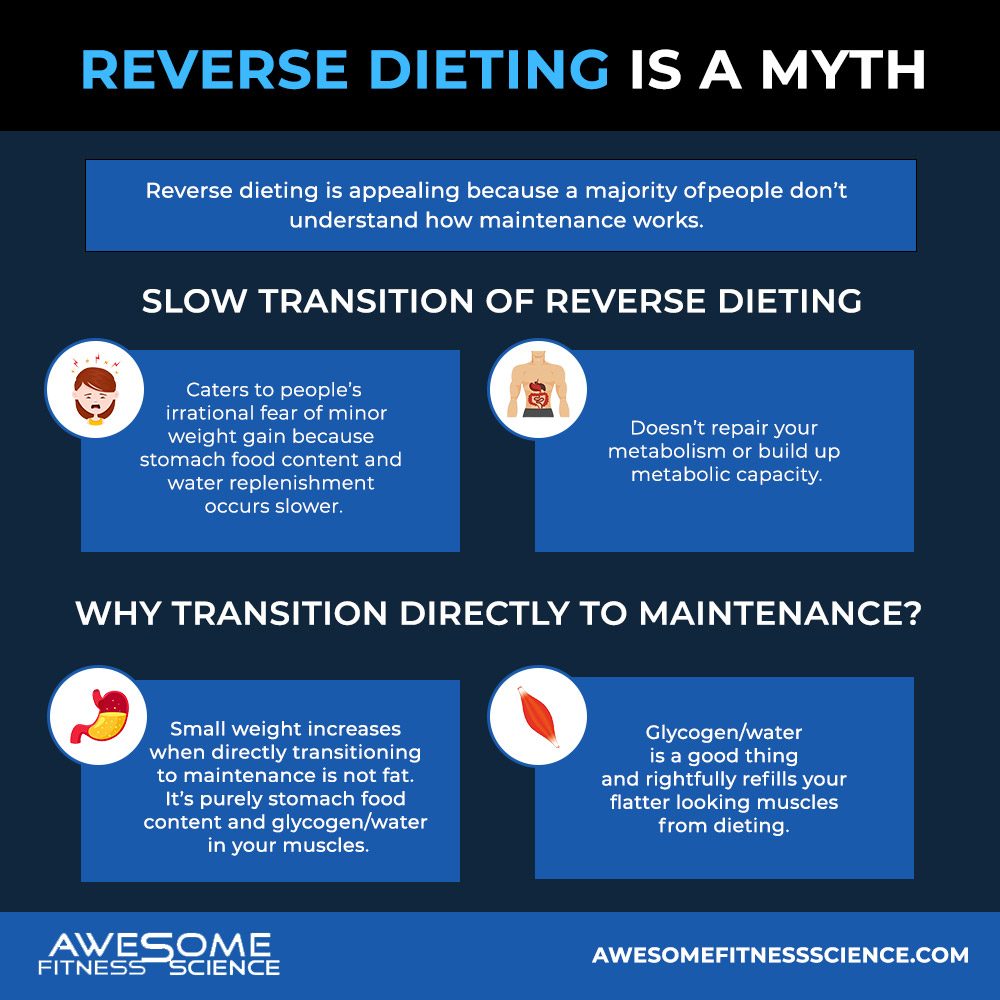1. Ostendorf, Danielle M, et al. “No Consistent Evidence of a Disproportionately Low Resting Energy Expenditure in Long-Term Successful Weight-Loss Maintainers.” OUP Academic, Oxford University Press, 12 Oct. 2018, academic.oup.com/ajcn/article/108/4/658/5129189?login=true.
2. Dulloo, A. G., et al. “How Dieting Makes the Lean Fatter: from a Perspective of Body Composition Autoregulation through Adipostats and Proteinstats Awaiting Discovery.” Wiley Online Library, John Wiley & Sons, Ltd, 22 Jan. 2015, onlinelibrary.wiley.com/doi/abs/10.1111/obr.12253.
3. Hintze . “The Rate of Weight Loss Does Not Affect Resting Energy Expenditure and Appetite Sensations Differently in Women Living with Overweight and Obesity.” Physiology & Behavior, U.S. National Library of Medicine, pubmed.ncbi.nlm.nih.gov/30496740/.
4. Pasiakos . “Acute Energy Deprivation Affects Skeletal Muscle Protein Synthesis and Associated Intracellular Signaling Proteins in Physically Active Adults.” The Journal of Nutrition, U.S. National Library of Medicine, pubmed.ncbi.nlm.nih.gov/20164371/.
5. Areta . “Reduced Resting Skeletal Muscle Protein Synthesis Is Rescued by Resistance Exercise and Protein Ingestion Following Short-Term Energy Deficit.” American Journal of Physiology. Endocrinology and Metabolism, U.S. National Library of Medicine, pubmed.ncbi.nlm.nih.gov/24595305/.
6. Carbone . “Effects of Short-Term Energy Deficit on Muscle Protein Breakdown and Intramuscular Proteolysis in Normal-Weight Young Adults.” Applied Physiology, Nutrition, and Metabolism = Physiologie Appliquee, Nutrition Et Metabolisme, U.S. National Library of Medicine, pubmed.ncbi.nlm.nih.gov/24945715/.
7. Murphy, Chaise, and Karsten Koehler. “Caloric Restriction Induces Anabolic Resistance to Resistance Exercise.” European Journal of Applied Physiology, Springer Berlin Heidelberg, 31 Mar. 2020, link.springer.com/article/10.1007/s00421-020-04354-0.
8. Murray, Bob, and Christine Rosenbloom. “Fundamentals of Glycogen Metabolism for Coaches and Athletes.” Nutrition Reviews, Oxford University Press, 1 Apr. 2018, www.ncbi.nlm.nih.gov/pmc/articles/PMC6019055/.
9. AE;, Trexler. “Physiological Changes Following Competition in Male and Female Physique Athletes: A Pilot Study.” International Journal of Sport Nutrition and Exercise Metabolism, U.S. National Library of Medicine, pubmed.ncbi.nlm.nih.gov/28422530/.
10. Tinsley . “Changes in Body Composition and Neuromuscular Performance Through Preparation, 2 Competitions, and a Recovery Period in an Experienced Female Physique Athlete.” Journal of Strength and Conditioning Research, U.S. National Library of Medicine, pubmed.ncbi.nlm.nih.gov/30036283/.
11. Bonilla, Diego A, et al. “The 4R’s Framework of Nutritional Strategies for Post-Exercise Recovery: A Review with Emphasis on New Generation of Carbohydrates.” International Journal of Environmental Research and Public Health, MDPI, 25 Dec. 2020, www.ncbi.nlm.nih.gov/pmc/articles/PMC7796021/.
12. Mason . “History of Weight Cycling Does Not Impede Future Weight Loss or Metabolic Improvements in Postmenopausal Women.” Metabolism: Clinical and Experimental, U.S. National Library of Medicine, pubmed.ncbi.nlm.nih.gov/22898251/.
13. TN;, Sathyaprabha. “Basal Metabolic Rate and Body Composition in Elderly Indian Males.” Indian Journal of Physiology and Pharmacology, U.S. National Library of Medicine, pubmed.ncbi.nlm.nih.gov/10846632/.
14. Lazzer . “Relationship between Basal Metabolic Rate, Gender, Age, and Body Composition in 8,780 White Obese Subjects.” Obesity (Silver Spring, Md.), U.S. National Library of Medicine, pubmed.ncbi.nlm.nih.gov/19478787/.
15. Johnstone . “Factors Influencing Variation in Basal Metabolic Rate Include Fat-Free Mass, Fat Mass, Age, and Circulating Thyroxine but Not Sex, Circulating Leptin, or Triiodothyronine.” The American Journal of Clinical Nutrition, U.S. National Library of Medicine, pubmed.ncbi.nlm.nih.gov/16280423/.
16. De Souza MJ. “Randomised Controlled Trial of the Effects of Increased Energy Intake On MENSTRUAL Recovery in EXERCISING Women with MENSTRUAL Disturbances: The ‘REFUEL’ Study.” Human Reproduction (Oxford, England), U.S. National Library of Medicine, pubmed.ncbi.nlm.nih.gov/34164675/.






